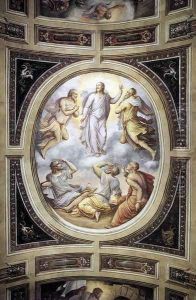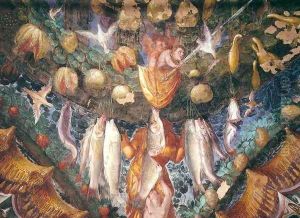Cristofano Gherardi Paintings
Cristofano Gherardi, also known as il Doceno, was an Italian painter and decorator born in 1508 in Borgo San Sepolcro, Tuscany, which is now known as Sansepolcro. He was a prominent figure of the Italian Renaissance, known for his fresco paintings and intricate designs that adorned the walls of churches and palaces.
Gherardi began his artistic training under the guidance of his father, who was a painter as well. However, his style was greatly influenced by the work of Giorgio Vasari, with whom he collaborated on several projects. Gherardi was renowned for his ability to merge his style with Vasari's, and this collaboration resulted in some of the era's most celebrated decorations.
Throughout his career, Gherardi worked mainly in Tuscany and Umbria. His works include the frescoes in the Palazzo dei Consoli in Gubbio, the decorations in the Palazzo del Podesta in Bibbiena, and his contributions to the Palazzo Vecchio in Florence. One of Gherardi's most significant works is the decoration of the del Sale, a hall in the Palazzo Vecchio, which he completed with Vasari.
Gherardi's art is characterized by its dynamic compositions, vivid colors, and the lively rendering of figures. His frescoes often depicted scenes from mythology and history, imbued with a sense of drama and movement that was typical of the Mannerist style of the late Renaissance.
Unfortunately, many of Gherardi's works have been lost or damaged over time, but those that survive continue to be admired for their creativity and technical skill. Cristofano Gherardi's contribution to the world of Renaissance art is notable for its blend of innovation and adherence to the stylistic elements of the time.
Cristofano Gherardi passed away in 1556, leaving behind a legacy that would influence future generations of artists. His works are preserved in various institutions and continue to be studied for their historical significance and artistic value.








